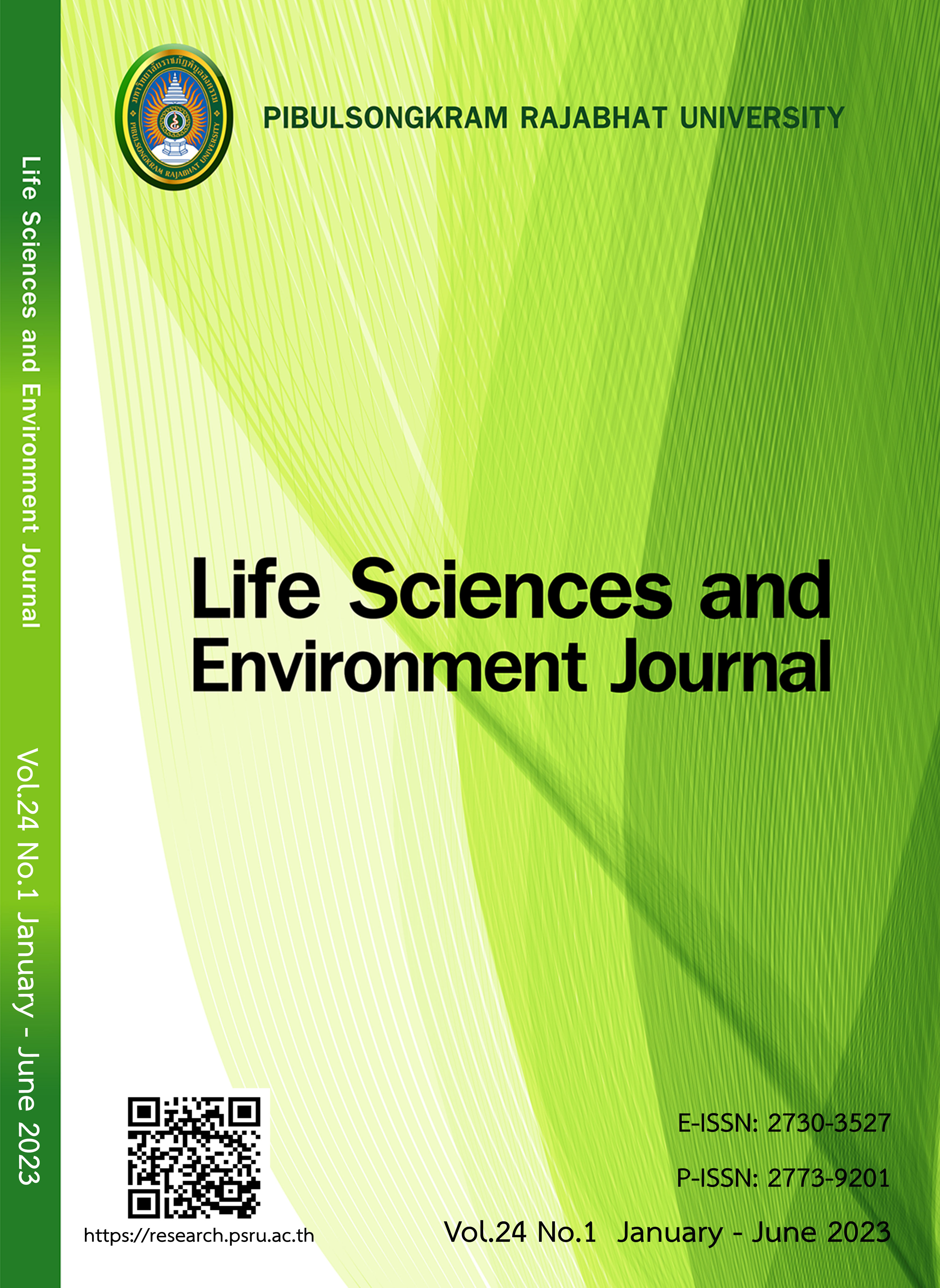A SIMULATION MODEL FOR PLANNING A PUBLIC TRANSPORT USING ELECTRIC VEHICLES: A CASE OF PHETCHABUN RAJABHAT UNIVERSITY
DOI:
https://doi.org/10.14456/lsej.2023.20Keywords:
Electric vehicles, Simulation model, Planning a public transportAbstract
The research's objective is to develop and study the behavior of public transport using electric vehicles from computer models under the conditions set by the university. The research process divides into two main parts: Part 1 is application. Metaheuristic Algorithms to find the appropriate sequence of travel routes, and part 2 is to develop and study the model. To assess the ability to assess service capability. The following indicators are observed, this includes the success of the service performance in conjunction with the waiting period, the amount of density in the queue, and the total length of time that the service recipient needs to be in the system. The model results show that the system can meet the needs of service users. However, considering the time lost on the trip, it was found that the average service time spent more than half an hour in a distance of fewer than five kilometers. The solution was to increase the frequency of service cycles. However, due to restrictions on the number of vehicles that are limited. Each round trip requires an average of 75.25 minutes. Therefore, to ensure that public transport can respond to customers effectively. The person in charge should increase the number of vehicles in line with the needs of the service users. However, the need for Phetchabun Rajabhat University to become a green university remains an important and challenging goal. This research demonstrates awareness of the university's environmental responsibilities and wants to stimulate activities to transform into a green university truly.
References
Abdul Rasib AH, Abdul-Rashid SH, Wakhi Anuar NFB, Rafaai ZFM, Md Noor R. Production smoothness improvement through ARENA Application in the Food Manufacturing Industry. Turkish Journal of Computer and Mathematics Education 2021;12(3):3516-3526.
Alcamo J, Dronin N, Endejan M, Golubev G, Kirilenko A. A new assessment of climate change impacts on food production shortfalls and water availability in Russia. Global Environmental Change 2007;17(3):429-444.
Alsolami FJ. Measuring the Performance of inventory management system using arena simulator. International Journal of Advanced Computer Science and Applications 2020;11(6):186-193.
Amdee N, Maneesaeng T, Janchaiyaphoom H. Ant colony optimization applied to routing for tourism of Khao Kho district, Phetchabun Province. Paper presented at the 2016 8th Conference of Electrical Engineering Network of Rajamangala University of Technology 2016;8:501-504.
Amdee N, Maneesaeng T. A Study of electric car service system in Phetchabun Rajabhat University by simulations and ant colony optimization. Muban Chombueng Rajabhat University Research Journal (Humanities and Social Science) 2018;6(2):74-88.
Dias ASME, Antunes RMG, Abreu A, et al. Utilization of the arena simulation software and lean improvements in the management of metal surface treatment processes. Procedia Computer Science 2022;204:140-147.
Doe P. Arena simulation of spare parts inventory management: A case of a telecom managed service provider. European Journal of Business and Management 2022;1497-110.
Kroll C, Warchold A, Pradhan P. Sustainable Development Goals (SDGs): Are we successful in turning trade-offs into synergies? Palgrave Communications 2019;5(1):140.
Li W. A new approach to the traveling salesman problem. Paper presented at the 2022 ACM Southeast Conference 2022; 52-59.
Maçin KE. UI GreenMetric ranking performance analysis of universities in Turkey: Suggestions towards to becoming green campuses. Paper presented at the 2021 7th International Conference on sustainable 2021;7:16-24.
Mishra R, Pandey S, Singh S. An algorithmic approach to travelling salesman problem. Paper presented at the 2012 2nd Conference on Recent Trends in Engineering and Technology 2012;2;18-23.
Modibbo UM, Okolo A. A discrete event simulation model for the management of patients flow in healthcare emergency department. International Journal of Science and Research (IJSR) 2018; 7:420-423.
Pikulhom P, Chaimanee A. Simulation for improving performance of transportation and inventory management of construction material store. Paper presented at the 2017 7th Proceedings of KU-KPS Conference 2017;7:642-652.
Raff S. Routing and scheduling of vehicles and crews: The state of the art. Computers & Operations Research.1983;10(2):63-211.
Ransikarbum K, Kim N, Ha S, Wysk RA, Rothrock L. A highway-driving system design viewpoint using an agent-based modeling of an affordance-based finite state automata. IEEE Access.2018;6:2193-2205.
Ransikarbum K. Analysis of traffic flow at a red light intersection using computer simulation technique. Thai Journal of Operations Research 2020;8(2):1-14.
Sargent R. Verification and validation of simulation models. Paper presented at the 2020 Proceedings of the 2020 Winter Simulation Conference 2020;37:16-29.
Setsathien P, Kerdphon K. Mass transport simulation in Rambhai Barni Rajabhat University. Thaksin University Journal 2022;21(1):41-49.
Shahzad U. Global warming: Causes, effects and solutions. Durreesamin Journal 2015;1(4):1-7.
Teannava P, Maneesaeng T, Khammuang K. A study of logistics system with electric vehicles in Phetchabun Rajabhat University. Paper presented at the 2016 4th National Conference on Muban Chombueng Rajabhat University 2016;8:273-283.
Thailand Greenhouse Gas Management Organization (Public Organization: TGO). 2019 Project for studying and establishing a baseline greenhouse gas emissions from the transportation sector in pilot provinces and the study of guidelines for promoting activities to reduce greenhouse gas emissions from the transport sector. Available at: http://www.tgo.or.th/2020/index.php/th/. Accessed 15 February 2022.
Downloads
Published
How to Cite
Issue
Section
License
Copyright (c) 2023 Life Sciences and Environment Journal

This work is licensed under a Creative Commons Attribution-NonCommercial-NoDerivatives 4.0 International License.
Each article is copyrighted © by its author(s) and is published under license from the author(s).










